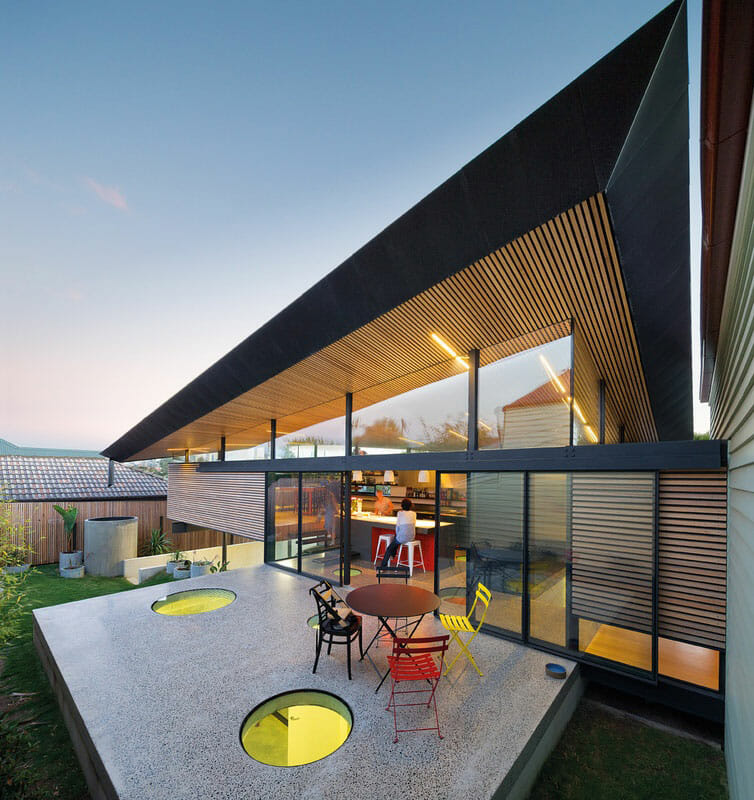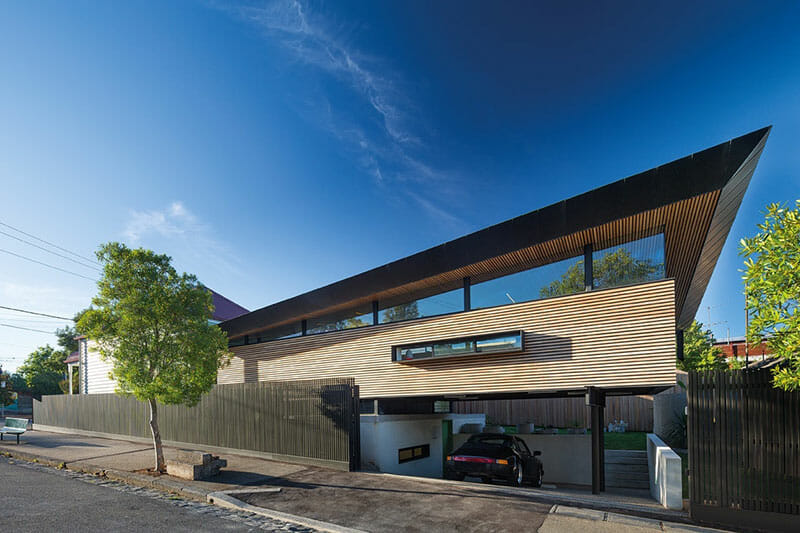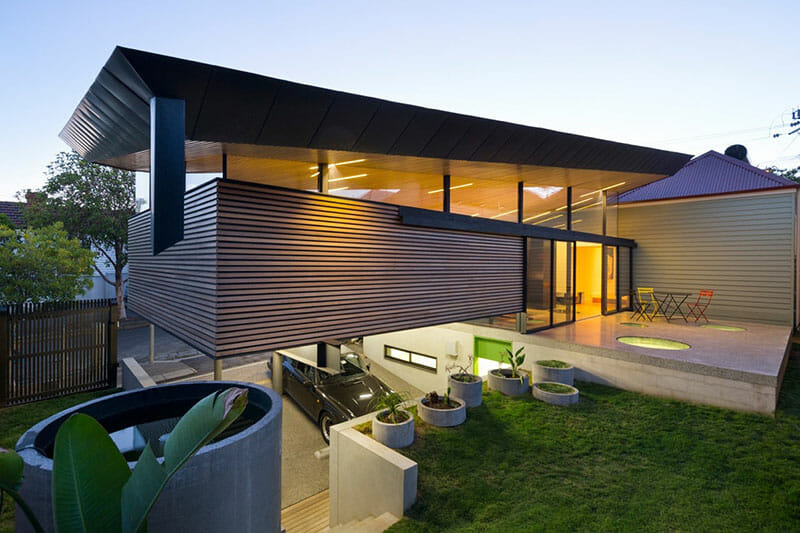The mullet, business up front and a party down back.
What at first seems a strange name for a house, “Mullet House” actually makes sense. Looking at a mullet haircut, you have short hair at the front and long locks at the back. Mullet House by March Studio, follows a similar pattern. The Kensington home consists of a petite terrace at the front and an open, spacious extension towards the rear.
Instead of “business up front”, it’s Edwardian style weatherboard and in place of a “party down back”, we find a contemporary architectural wonder.
Owner builder, Scott Smith of CBD Contracting Group, commissioned March Studio after working with the design team on their renowned Aesop retail store designs. With heritage overlays on the existing home, and corner block location, the home’s design needed to meet living requirements for Smith and his family, while also using space, material and form in a clever way.

Instead of turning to the “back box” extension solution we usually see in so many terrace renovations. March Studio went totally rouge. Mullet House’s addition is raised, allowing for additional play, storage and car space below the main living zone. Highlight glazing and timber cladding allows for complete privacy, without any natural light compromises.
Mullet House boasts an impressive street view and aerial photographs reveal and inspiring roof design. The single pitch roof, with twisting on the south-eat and north-west corners was created using our Standing Seam cladding profile. Our Flatlock panels were also used on Mullet House, applied to the angled soffits, they offer contrast to the external timber cladding.

The jury might not be out yet on mullets, but it’s fair to say Mullet House has mastered the art of inner city cool, reminding us all how effective architectural creativity can be.
Project Details
Architect: March Studio
Builder: CBD Contracting Group
Installer: Specialized Roffing & Cladding
Systems: Standing Seam and Flatlock
Materials: Rheinzink Graphite Grey and COLORBOND® Monument
Photography: John Gollings
Information source: Architecture AU



